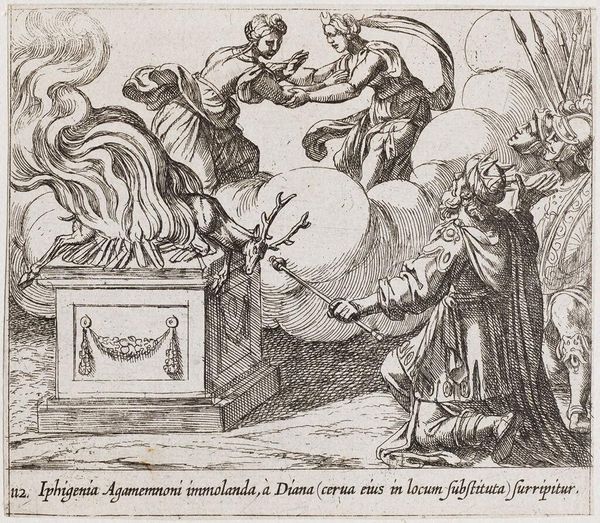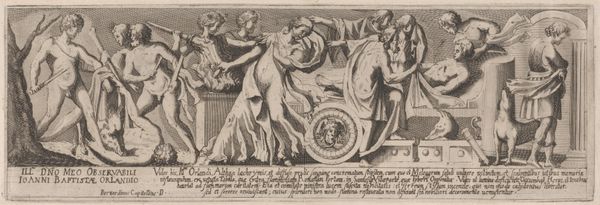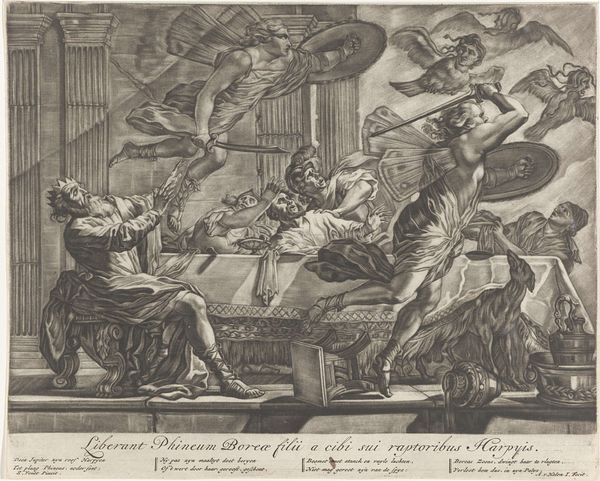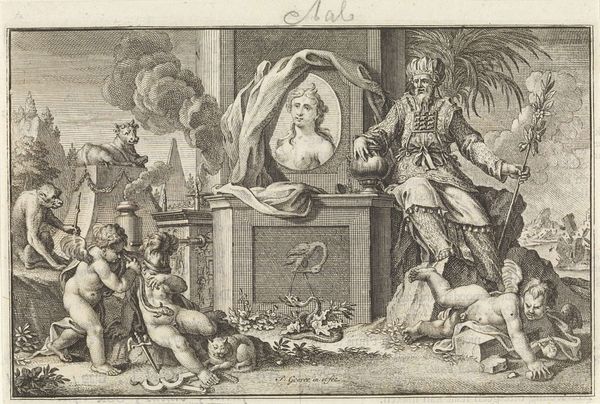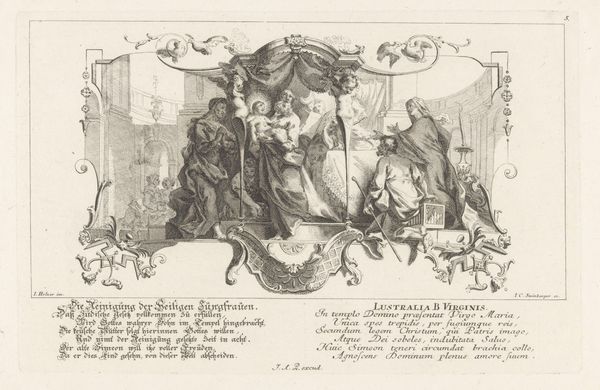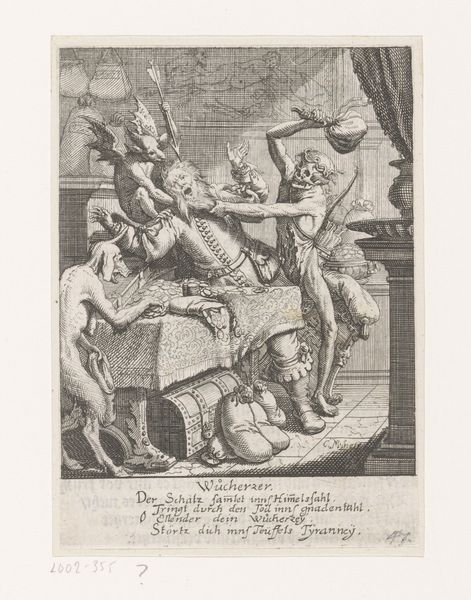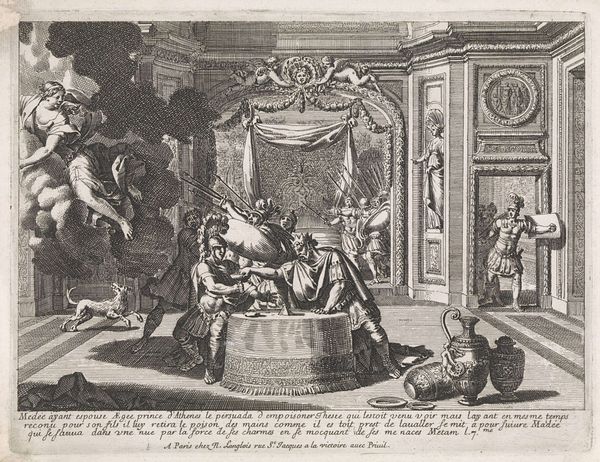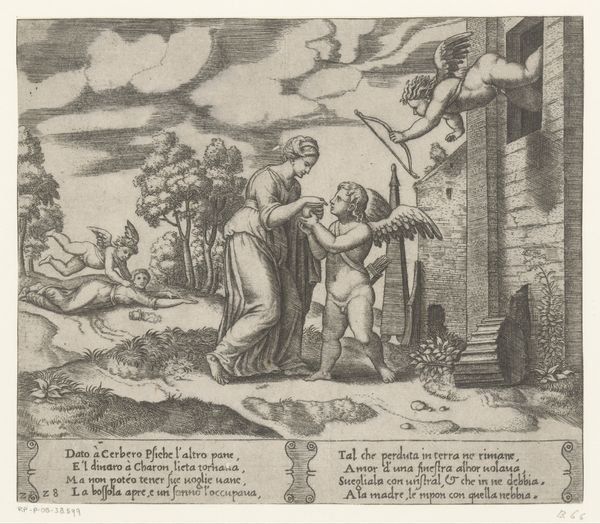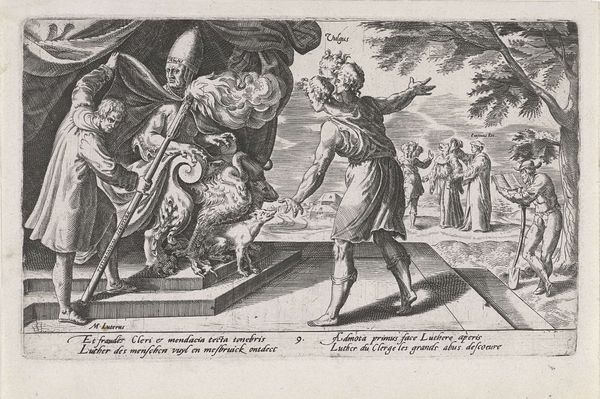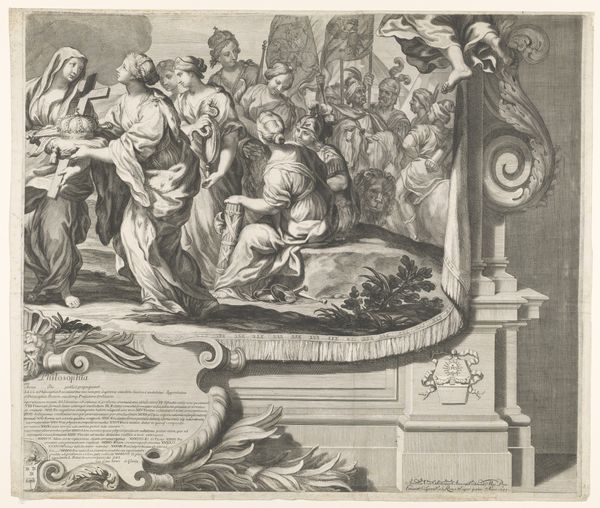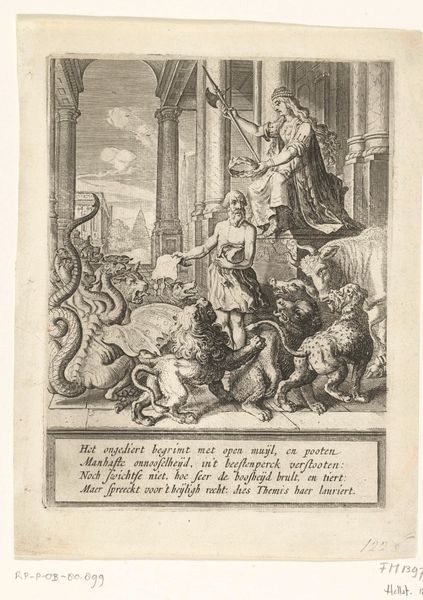
Plate 112: Agamemnon Sacrificing Iphigenia (Iphigenia Agamemnoni immolanda, à Diana (cerva eius in locum substituta) surripitur), from Ovid's 'Metamorphoses' 1606
0:00
0:00
drawing, print, etching, engraving
#
drawing
#
allegory
#
baroque
#
pen drawing
# print
#
etching
#
figuration
#
soldier
#
history-painting
#
engraving
Dimensions: Sheet: 4 in. × 4 1/2 in. (10.1 × 11.5 cm)
Copyright: Public Domain
Curator: Look at this etching, a print made in 1606 by Antonio Tempesta titled "Agamemnon Sacrificing Iphigenia from Ovid’s Metamorphoses." The scene unfolds with dramatic intensity, doesn't it? Editor: Absolutely, my immediate reaction is the swirling chaos juxtaposed with a kind of detached serenity. There’s fire, a panicked deer—then floating figures watching impassively. A really potent mix. Curator: Tempesta is rendering a pivotal moment. Agamemnon is prepared to sacrifice his daughter, Iphigenia, to appease Diana and secure safe passage for the Greek fleet to Troy. What does the deer mean to you? Editor: The deer on the altar obviously plays a central symbolic role; the animal being sacrificed, a surrogate—the 'cerua' in the title, a crucial substitute to appease divine wrath. The artist draws a symbolic line between animal and maiden. There’s an echo of ancient Artemis cults too, maybe a vestige of pre-patriarchal religious systems. Curator: That’s where it gets interesting, right? We can explore the gendered power dynamics at play. Iphigenia, a young woman, becomes a pawn in a power struggle, a sacrifice deemed necessary for patriarchal ambition and political gain, it makes me think of a #MeToo interpretation, a system failing its own kin for war! Editor: Indeed, you can see the long shadow of patriarchal compromise across millennia. The cloud is inhabited by Diana, the intervention offers an archetypal message of a merciful goddess protecting vulnerable female subjects from harm; such figures reassure across cultures. It points to continuity, but it must carry a psychological load. Curator: Definitely! Consider too the cost for Agamemnon, torn between his role as a father and as a king. But there are contemporary threads here. Are the dynamics of state power worth the life of an innocent? Tempesta pushes these questions to the forefront. It invites us to critically engage with structures of authority. Editor: True. By engaging with Tempesta's visual vocabulary, we've illuminated enduring themes of sacrifice, power, and intervention. It makes you wonder whether this sacrifice changed anything or were more inevitable, or cruel ones made after, instead?
Comments
No comments
Be the first to comment and join the conversation on the ultimate creative platform.
